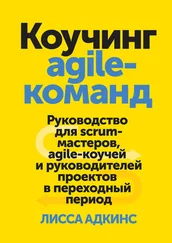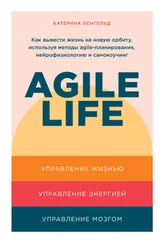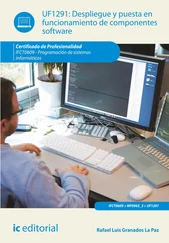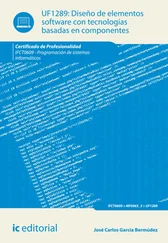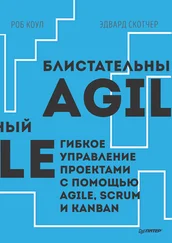To master the professional language of chairmaking means to be able to act in an effective way together with other people who know chairmaking. To "know" does not mean explicitly knowing the rules you have learned, but rather recognizing when something is done in a correct or incorrect way. To have a concept is to have learned to follow rules as part of a given practice. Speech acts are, as a unity of language and action, part of practice. They are not descriptions but Below I will elaborate on language-games, focusing on the design process descriptions in design, design artifacts, and knowledge in the design of computer applications.
Language Games
To use language is to participate in language-games. In discussing how we in practice follow (and sometimes break) rules as a social activity, Wittgenstein asks us to think of games, how they are made up and played. We often think of games in terms of a playful, pleasurable engagement. I think this aspect should not be denied, but a more important aspect for our purpose here is that games are activities, as are most of the common language-games we play in our ordinary language.
Language-games, like the games we play as children, are social activities. To be able to play these games, we have to learn to follow rules, rules that are socially created but far from always explicit. The rule-following behavior of being able to play together with others is more important to a game than the specific explicit rules. Playing is interaction and cooperation. To follow the rules in practice means to be able to act in a way that others in the game can understand. These rules are embedded in a given practice from which they cannot be distinguished. To know them is to be able to "embody" them, to be able to apply them to an open class of cases.
We understand what counts as a game not because we have an explicit definition but because we are already familiar with other games. There is a kind of family resemblance between games. Similarly, professional language-games can be learned and understood because of their family resemblance to other language-games that we know how to play.
Language games are performed both as speech acts and as other activities, as meaningful practice within societal and cultural institutional frameworks. To be able to participate in the practice of a specific language-game, one has to share the form of life within which that practice is possible. This form of life includes our natural history as well as the social institutions and traditions into which we are born. This condition precedes agreed social conventions and rational reasoning. Language as a means of communication requires agreement not only in definitions, but also in judgments. Hence, intersubjective consensus is more fundamentally a question of shared background and language than of stated opinions (Wittgenstein., 1953).
This definition seems to make us prisoners of language and tradition, which is not really the case. Being socially created, the rules of language games, like those of other games, can also be socially altered. There are, according to Wittgenstein, even games in which we make up and alter the rules as we go along. Think of systems design and use as language games. The very idea of the interventionistic design language-game is to change the rules of the language-game of use in a proper way.
The idea of language-games entails an emphasis on how we linguistically discover and construct our world. However, language is understood as our use of it, as our social, historic, and intersubjective application of linguistic artifacts. As I see it, the language-game perspective therefore does not preclude consideration of how we also come to understand the world by use of other tools.
Tools and objects play a fundamental role in many language-games. A hammer is in itself a sign of what one can do with it in a certain language-games. And so is a computer application. These signs remind one of what can be done with them. In this light, an important aspect in the design of computer applications is that its signs remind the users of what they can do with the application in the language-games of use (Brock, 1986). The success of "what-you-see-is-what-you-get" and "direct manipulation" user interfaces does not have to do with how they mirror reality in a more natural way, but with how they provide better reminders of the users' earlier experiences (B0dker, forthcoming). This is also, as will be discussed in the following, the case with the tools that we use in the design process.
Knowledge and Design Artifacts
As designers we are involved in reforming practice, in our case typically computer-based systems and the way people use them. Hence, the language-games of design change the rules for other language-games, in particular those of the application's use. What are the conditions for this interplay and change to operate effectively?
A common assumption behind most design approaches seems to be that the users must be able to give complete and explicit descriptions of their demands. Hence, the emphasis is on methods to support this elucidation by means of requirement specifications or system descriptions
(Jackson, 1983; Yourdon, 1982).
In a Wittgensteinian approach, the focus is not on the "correctness" of systems descriptions in design, on how well they mirror the desires in the mind of the users, or on how correctly they describe existing and future systems and their use. Systems descriptions are design artifacts. In a Wittgensteinian approach, the crucial question is how we use them, that is, what role they play in the design process.
The rejection of an emphasis on the "correctness" of descriptions is especially important. In this, we are advised by the author of perhaps the strongest arguments for a picture theory and the Cartesian approach to design--the young Wittgenstein in Tractatus Logico-Philosophicus (1923). The reason for this rejection is the fundamental role of practical knowledge and creative rule following in language-games.
Nevertheless, we know that systems descriptions are useful in the language-game of design. The new orientation suggested in a Wittgensteinian approach is that we see such descriptions as a special kind of artifact that we use as "typical examples" or "paradigm cases." They are not models in the sense of Cartesian mirror images of reality (Nordenstam, 1984). In the language-game of design, we use these tools as reminders for our reflection on future computer applications and their use. By using such design artifacts, we bring earlier experiences to mind, and they bend our way of thinking of the past and the future. I think that this is why we should understand them as representations (Kaasboll, forthcoming). And this is how they inform our practice. If they are good design artifacts, they will support good moves within a specific design language-game.
The meaning of a design artifact is its use in a design language-game, not how it "mirrors reality." Its ability to support such use depends on the kinds of experience it evokes, its family resemblance to tools that the participants use in their everyday work activity. Therein lies a clue to why the breakthrough in the UTOPIA project was related to the use of prototypes and mockups. Since the design artifacts took the form of reminders or paradigm cases, they did not merely attempt to mirror a given or future practice linguistically. They could be experienced through the practical use of a prototype or mockup. This experience could be further reflected upon in the language-game of design, either in ordinary language or in an artificial one.
A good example from the UTOPIA project is an empty cardboard box with "desktop laser printer" written on the top. There is no functionality in this mockup. Still, it works very well in the design game of envisioning the future work of makeup staff. It reminded the participating typographers of the old "proof machine" they used to work with in lead technology. At the same time, it suggested that with the help of new technology, the old proof machine could be reinvented and enhanced.
Читать дальше

